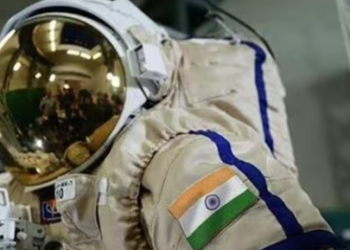The Indian Space Research Organisation (ISRO) marked a historic achievement as its solar observation mission, Aditya L1, successfully entered the Halo orbit around the Sun-Earth Lagrange point L1. ISRO Chief expressed jubilation, calling it the “end of a long journey” and a significant milestone in India’s space exploration endeavours.
Sub-Headline: Aditya L1 Poised for Unprecedented Solar Observations from Unique Orbital Position
The Aditya L1 mission, which aims to study the Sun and its outermost layer, the corona, reached a crucial juncture as the spacecraft entered the Halo orbit. This unique position, at the Sun-Earth Lagrange point L1, provides an ideal vantage point for continuous and unobstructed observations of the Sun.
ISRO Chief, in a press conference following the successful orbital insertion, expressed his satisfaction, saying, “This is the end of a long journey that began with a vision to unravel the mysteries of our Sun. The successful entry into the Halo orbit positions Aditya L1 for unprecedented solar observations, contributing to our understanding of the Sun’s behaviour and its impact on space weather.”
The Halo orbit, a special type of orbit around the Lagrange point, offers stability and enables constant monitoring of the Sun without the interference of Earth’s atmosphere. Aditya L1 is equipped with advanced instruments, including a visible Emission Line Coronagraph (VELC) for studying the solar corona.
Scientists and researchers at ISRO anticipate that the data collected from Aditya L1 will provide valuable insights into solar activities, helping to enhance our understanding of solar phenomena and their effects on space weather.
The successful entry into the Halo orbit comes after meticulous planning and execution by ISRO’s team of scientists and engineers. The Aditya L1 mission holds significant importance in the global scientific community, contributing to ongoing efforts to expand our knowledge of the Sun and its crucial role in the solar system.








 India
India












